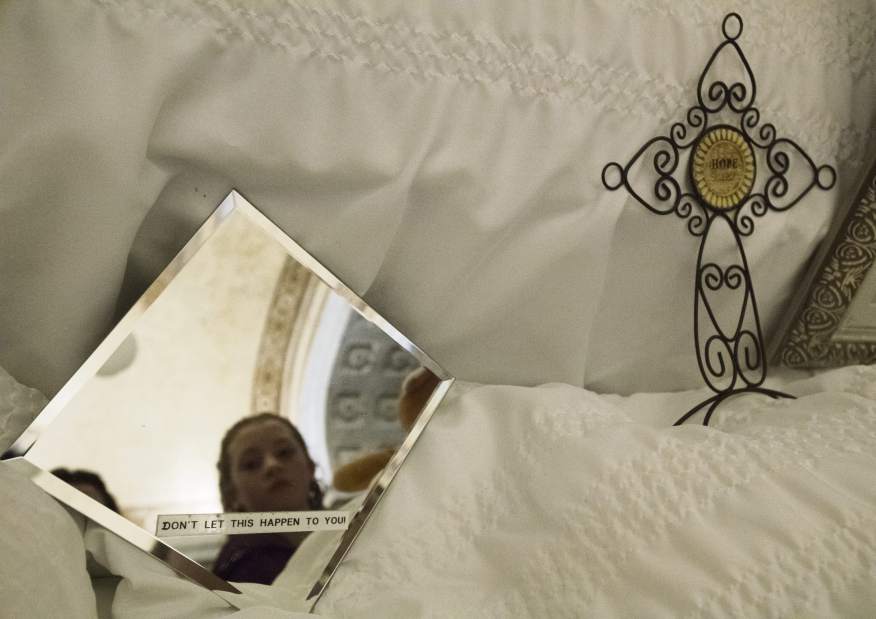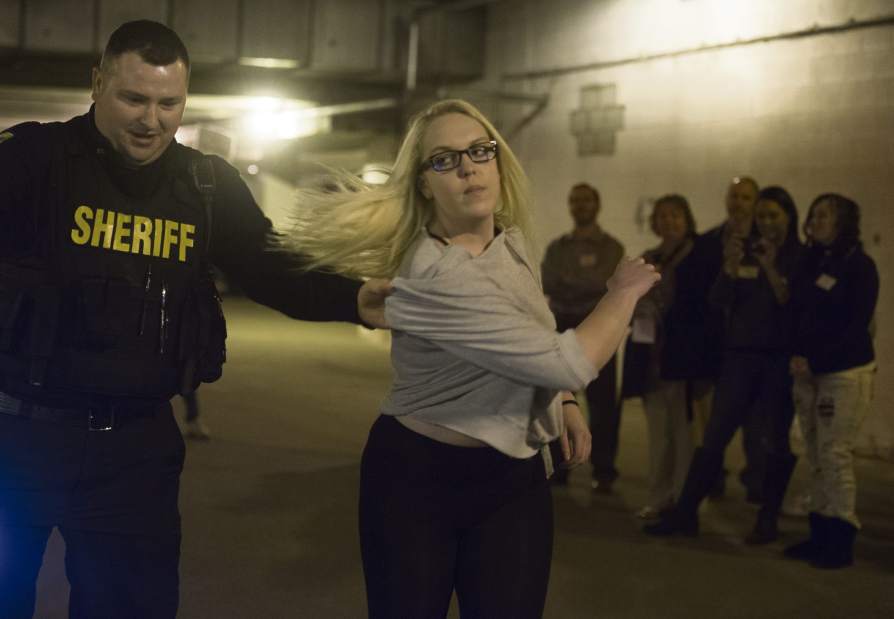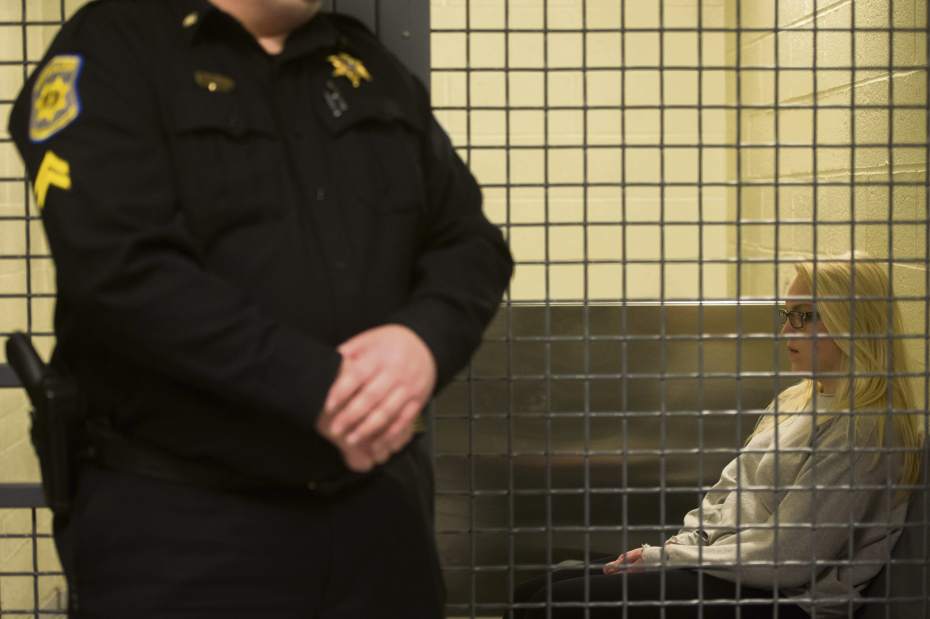Reality Tour program continues efforts to educate about dangers of addictions
Greensburg attorney Vince Quatrini thought his community could benefit from drug prevention. Ten years later, the Reality Tour he brought to the courthouse is still going strong.
“I was impressed by the concept,” Quatrini said. “It was so simple and yet so effective to me.”
He pulled together members of various Westmoreland County agencies and groups who continue to volunteer monthly in an effort to educate area families about drugs and alcohol.
“I have been touched in my family by drug and alcohol addiction,” he said. “To know that I've contributed something to the fight against that makes me feel like I'm doing God's work.”
Since February 2007, hundreds of children age 10 and older and their parents or guardians have watched a mock drug arrest in the Westmoreland County Courthouse parking garage and paid their respects inside to an overdose victim at a pretend funeral. The staying power of Greensburg's Reality Tour means that area families have been equipped with tools and information about how to keep the tight grasp of drugs out of their homes.
The drug scene has changed dramatically over the last decade.
In 2007, 50 people died locally of a drug overdose, according to county coroner statistics. Of those, 24 deaths were heroin-related.
Those numbers have more than tripled.
In 2016, 162 people died from a drug overdose, with nine more cases still under investigation. Of those, 92 deaths were heroin-related, according to the coroner.
Organizers have tweaked their message over the years in response to the changing landscape, said Norma Norris, executive director of Candle, Inc. and Reality Tour developer. Two of the more prominent examples are with prescription drug abuse and synthetic drugs, such as bath salts and K2.
“Designer drugs were almost unheard of when we started this,” Norris said. “We still understood it as something that was happening in our society, but now we have an emphasis on designer drugs.”
Harrold Middle School Principal Jason Lochner thinks more needs to be done to help students understand the reality of the current opioid epidemic, “to make the issue not so abstract to them.”
In Pennsylvania, 3,264 people died from drug overdoses in 2015, according to the most recent data available from the Centers for Disease Control, an increase of more than 500 deaths from the previous year.
“It's an absolute real-life problem,” Lochner said.
Fill the seats
The Greensburg Reality Tour had the highest participation of all locations in 2016 with 410 attendees, according to Candle, the Butler County-based nonprofit that created the tour. Eleven counties in Pennsylvania have at least one Reality Tour location. Westmoreland County has the most, with tours in Belle Vernon, Latrobe, Norwin, Greensburg, Mt. Pleasant and Murrysville. Nearly 1,400 people attended the county's six tours last year.
“It's our best example of Reality Tour operating within a county,” Norris said.
School districts, including Hempfield Area, have been great partners to fill the seats. But Lochner thinks the participation rate could be higher.
“I'm actually disappointed that more parents don't go,” he said. Tours begin with a narrated scenario in which a teenager talks about drug experimentation and the consequences, which turn fatal. There are arrests and scenes at hospitals and funerals. Afterward, children work with parents to set prevention goals.
“We are giving parents the tools so that this doesn't have to happen in their family,” Norris said. “We are putting prevention on the shoulders of the parents, where it belongs.”
At the end, people who are in recovery from an addiction share their stories and organizers answer audience questions.
“It's updated every two years, so the information is always current,” she said.
A decade ago
In 2007, there was a lot of discussion about underage drinking parties and a little more emphasis on cocaine, said Donna Kean, longtime volunteer and executive director of St. Vincent College Prevention Projects.
It's different now, after a 2015 Pennsylvania Youth Survey showed a spike in sixth-graders in Westmoreland using prescription drugs without a doctor's orders.
“I think parents are more informed or they're curious, they've heard things,” Kean said, adding that parents ask more in-depth questions now. “I don't recall 10 years ago, anybody (saying), ‘Talk to me about narcotics, talk to me about heroin.'”
Organizers discuss drug trends and show what a stamp bag of heroin looks like.
“We really try to focus on local to give everyone the lowdown on what's happening in their own backyard,” said Tim Phillips, director of the county's drug overdose task force. “It's the most wide-reaching prevention effort in the county.”
Another facet added to the tour shows recovery. Niki Perne of Irwin for the last few months has shared the story of her drug addiction and recovery.
“If that was around when I was young, I honestly think that would have curbed me from using,” she said. “It's something that every kid and parent should, I think, go through.”
Gabrielle Beaken, a 2016 Hempfield Area graduate, attended as a sixth-grader and now volunteers as an arrest suspect. “I absolutely love it,” she said. “It makes me really happy because I get to show people what it could be like.”
Making a difference
There's no way for tour volunteers to know whether the program is helping. They know they won't stop everyone from using.
In 2016, five people between ages 16 and 20 and 24 people between ages 21 and 30 died of drug overdoses, coroner figures show. Most deaths — 48 — were victims between the ages of 31 and 40.
In 2011, two men between ages 15 and 20 and 12 people between 21 and 30 died of drug overdoses, according to the coroner's office. That year 64 people died and the most — 19 — occurred in the 41-50 age group. Similar statistics are not available for 2007.
“We don't see the long-term effects,” Phillips said. “I figure that our education efforts ... (are) helping the young people and their families to understand the dangers of this.”
A moment of appreciation came at a local department store when a past tour participant recognized longtime volunteer Sheri Walker.
“She thanked me,” Walker said. “It made me realize that because even though we don't see what happens afterwards, we can make a difference.”
The tour runs on donations and volunteers, both of which always need replenished.
“It's a testament to the people of Westmoreland County and the nonprofit organization that it's still going,” Quatrini said. “And it speaks to the relevancy of the program to the fight against drugs.”
Renatta Signorini is a Tribune-Review staff writer. Reach her at 724-837-5374 or rsignorini@tribweb.com.



